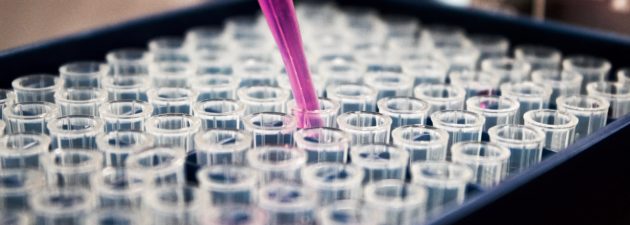When Beigene IPO’d 2016, when it was the first truly innovative Chinese biopharma company to IPO with both a distinguished management and an enviable investor base; the prestigious Baker Brothers as the cornerstone was the lynchpin of the investment case. It could have the best-in-class BTK molecule, fund managers pitched, and potentially have the first-in-class PD-1 molecule drug for the China market.
In the US biopharma market, in order to succeed, you must be either first-to-market or best-in-class on the basis of superior clinical efficacy and safety profiles. Models are built assuming percent market share based off one of those two criteria, with exponentially reduced assumptions for coming in 2nd or 3rd.
In the great Chinese PD-1 race, it was Junshi who won 1st to market – Beigene ultimately came in 6th. Today’s market leader is neither first nor best-in-class. China’s Innovent was 2nd to market, is good enough, but won the most important race: NDRL (national insurance) inclusion, through its willingness to come down to USD 15K per treatment. Beigene launched its PD-1 one year later, and what it lacks in volume is made up by its pivot to the US drug markets, where it can still command a heavy premium for R&D.
With the most recent round of price cuts, Innovent’s Tyvyt is almost a 95% reduction in cost relative to the US price of treatment. Yet, due to volumes and the cutting out of middlemen, as of FY20, Innovent’s gross margins still hover at 80%, vs. 71% for Merck and 80% for BMS. This is not just a gamechanger for China – China’s push to be the lowest priced drug market in the world could dramatically improve accessibility for lifesaving drugs globally. We are seeing the first steps of this thesis now.
On Tuesday, Innovent and partner Eli Lilly said that the FDA had accepted their application for Tyvyt in combo with Lilly’s Alimta for non-squamous non-small cell lung cancer (the most common form of lung cancer). It will be the first PD-1 drug developed by a Chinese company to have a clear FDA path. We don’t have any color on pricing strategy yet, but Eli Lilly has indicated that pricing will be their key sales driver – and indeed it will have to be, as the US market is saturated with entrenched players with a lot to lose. I-Mab is another oncology company which has successfully out-licensed the rights of its lead drug candidate to AbbVie, who will be responsible for global commercialization (read: bringing cheap Chinese drugs to the world). This was a true milestone for China pharma as at up to USD 1.94bn it surpassed the total deal value of even the deal that Innovent received for Tyvyt. So these are three successful role models for China pharma: be like Beigene and focus on the US; be like Innovent and focus on China; be like I-MAB and out-license your drugs.
China healthcare is accelerating due to a few reasons:
- Firstly, it has the world’s largest population of white collar labor, almost 10x the number of annual STEM grads as the US, who are paid just 1/5 of what US PhDs are. This is akin to the labor cost advantage that China had in blue collar labor over the last decade, and China wants to shift employment into higher value add sectors like pharma. Similarly, China pharma is closing an R&D gap due to many returnees coming home, with backgrounds from leading Western pharma companies (just look at the management of any of the pipeline of 100 biotech IPOs in Hong Kong/A-shares – if it isn’t 80% dominated by European/American companies you recognize, it’s probably a pass).
- Secondly, it is much easier to recruit for clinical trials, as the absolute and target patient size is much larger – for example, Beigene commented that it is 3x faster to recruit for Chinese trial than for a US one.
- Thirdly, the CFDA has vastly accelerated review times. What used to take years to review a drug application before now takes 2-7 months, vs. 4-10 months in the US, a reflection of increased investment in policymakers/reviewers at the government level and efficiency reforms. And, the process to get a clinical trial started (IND) now takes 60 days, a process that would take at least several months before.
If the 2000s were a great decade for banks, and the 2010s a great decade for tech… we think healthcare may be the greatest winner of this decade. Consistently low CPI figures don’t account for the inflation in healthcare, housing prices, and education over the last decade; healthcare is where there is the highest and most imminent potential for deflation, and Chinese companies, with leaner cost structures and guaranteed volume incentives, have the potential to export this deflation globally. This will lead to some long term winners in the healthcare space to rival the likes of US healthcare giants. Currently, the largest Chinese pharma company, Hengrui, is just USD 70bn in market cap (compare this to J&J’s USD 450bn). As of now, the weighting of healthcare is just 7% of MSCI China, compared to 13% of MSCI USA. Our China portfolio has almost 4x the weighting to healthcare as our benchmark, not only in drugs, but in medical equipment, CROs, and aesthetic medicine.
In the last decade, China exports enabled people to live better by reducing the cost of everyday goods. In this next decade, China exports will enable people to live longer, by reducing the cost of critical drugs – that is, if Western regulation doesn’t get in the way.
(Disclaimer: We own Innovent, and I-Mab.)

